The mad person as a symbol is a living, breathing reproach to the skeptical, scientific view of humanity and the universe which underlies everything that used to be known as Progress. The mad person as metaphor is also the one who opens the trap door to that nether world where fiction and reality have a mutually exclusive relationship. It can be called lunacy, madness or insanity, but perhaps those are fictitious destinations that avoid the investment in the journey, one motivated by an almost messianic longing.

"During 1967, Mr. Barrett was taking LSD every day, and that often left him incapable of performing. Mr. Gilmour joined Pink Floyd late in 1967, and by the spring of 1968, Mr. Barrett was out of the band. He wrote the song that closes “A Saucerful of Secrets,” Pink Floyd’s second album: “Jugband Blues,” which includes a Salvation Army band playing on one section. “It’s awfully considerate of you to think of me here,” he sang, “and I’m most obliged to you for making it clear/that I’m not here.” Without Mr. Barrett, Pink Floyd’s music changed. Whimsy gave way to majestic anthems on best-selling albums like “Dark Side of the Moon,” a concept album about insanity.
The mad person remains with us as one of the great themes of art, and once departed on this trajectory, the artist has no choice but to continue the search. There is an awareness however, that dealing with madness is like romancing Promethean fire. Goethe: “it is not otherwise possible… Whoever stands thus at the edge of the abyss has to die or go mad; there is no mercy.”

"With Pink Floyd, and on two haunting solo albums, Mr. Barrett became a touchstone for experimental pop musicians. He was also renowned both as an LSD casualty and as a symbol of how close creativity can be to madness. Mr. Barrett wrote most of the songs on Pink Floyd’s debut album, “The Piper at the Gates of Dawn.” In Mr. Barrett’s songs like “Astronomy Domine,” whimsy and wordplay merged with a playful sense of structure and sound. “Let’s try it another way/You’ll lose your mind and play,” he wrote in “See Emily Play.” He also helped to conceive the band’s performances as spectacles. “We have only just started to scrape the surface of effects and ideas of lights and music combined,” Mr. Barrett told the trade newspaper Melody Maker in 1967. "
The lunatic is on the grass
The lunatic is on the grass
remembering games and daisy chains and laughs
got to keep the loonies on the pathThe lunatic is in the hall
the lunatics are in the hall
the paper holds their folded faces to the floor
and every day the paper boy brings more …
The Mormon church says it has changed its genealogical database to better prevent the names of Jews killed in Nazi concentration camps from being submitted for posthumous baptism by proxy….Mormons believe posthumous baptism by proxy provides an opportunity for persons to receive the Gospel in the afterlife. Baptisms are performed in Mormon temples with members immersing themselves in a baptismal pool as proxies for others. The names used in the ceremonies are drawn from a church-run genealogical database. ( Associated Press )
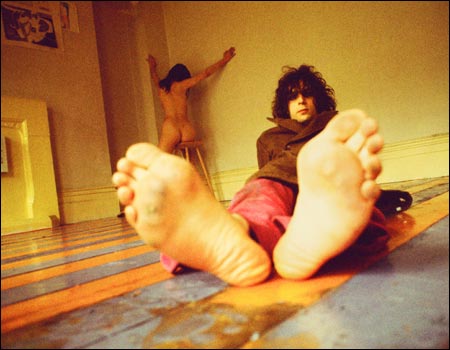
"Seven years after his psychosis had snowballed to the point where SYD BARRETT (1946-2006) could no longer function constructively with Pink Floyd, his former bandmates were still feeling the absence of their effervescent frontman. While Roger Waters denies that Wish You Were Here was a specific tribute to Barrett, it is hard not to see the album, and “Shine On You Crazy Diamond” in particular, as suffused, at least unconsciously, with the mixed emotions that emerged in response to Barrett’s psychological demise."
But the practice also includes proxy rites for others around the world from all faith traditions. The church believes departed souls can accept or reject the baptismal rites in the afterlife and contends the offerings are not intended to offend anyone. Jews, however, are offended by the idea that Mormons are trying to alter the religion of Holocaust victims, who were murdered because of their religion.
…And if the dam breaks open many years too soon
and if there is no room upon the hill
and if your head explodes with dark forbodings too
I’ll see you on the dark side of the moon
The lunatic is in my head
The lunatic is in my head
you raise the blade, you make the change
you rearrange me ‘ till I’m sane
you lock the door
and throw away the key
there’s someone in my head but it’s not me…

..."Anecdotes about Barrett’s unhinged unpredictability, both in the studio and on stage, are legion: turning up and playing only when he felt like it; changing songs as he went along; detuning his guitar during concerts. However, only Barrett could have amused, co
ed, and offended listeners of the period in equal measure with an ethereally harmonized ditty about a kleptomaniac transvestite (“Arnold Layne”). And only Barrett could have fashioned an experimental musical extravaganza out of a childish rhyme about bikes with bells on and mice called Gerald (“Bike”). His enchantingly warped originality — as writer, player, and performer — mark him out as much more than a loopy pharmacasualty of the psychedelic era."Under new church policies, members will be required to certify names submitted to the database for baptism. Further safeguards include monitoring those names for submissions that do not meet policy standards and the removal of records, church spokesman Michael Purdy said on a church-owned website.
…And if the cloud bursts, thunder in your ear
you shout and no one seems to hear
and if the band you’re in starts playing different tunes
I’ll see you on the dark side of the moon ( Pink Floyd, Brain Damage )
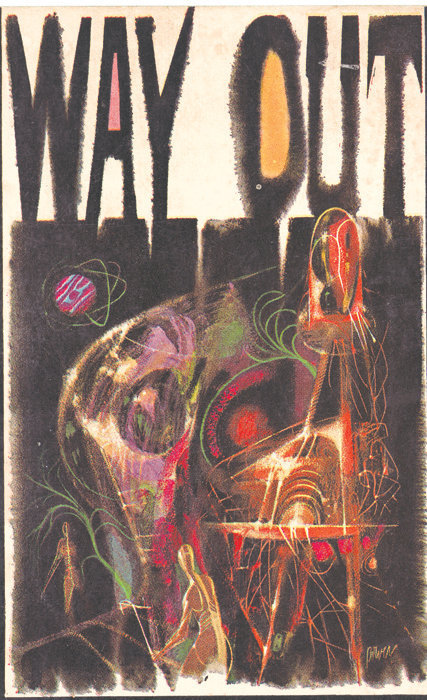
"...but, richard m/ powers turns out to be THE guy who changed the way we 'see' SF. prior to his emergence int he 1950's, since fiction tended to be spaceships and rayguns like flash gordon. all the imagery and the way we saw since fiction in our mind's eye was deeply controlled by that tradition. but, in the 50's, there emerged a new region of since fiction. pioneered by writers like bradbury and heinlein and dick and clarke and wyndham. it was a new imaginary world based more on the psychology on man encountering the vast unknown rather than their exploits. "
There certainly were souls that lived their life in a form of suspended animation between the afterlife and some approximation of objective reality; it certainly would have been a delightful confrontation between Mormon elders and some artistic luminaries from the past, especially if regarded from the standpoint of a “sane” observer. the battleground of the soul, far beneath the fantastic towers of humanity’s upper earth, that the artist, hoping to reclaim his lost legacy of dreams, myths and mystic flights of imagination would confront the religious dictates and moral dogma of faith based institutions who regard their endeavors as a combination of moral suasion and blackmail; a tracking down and accounting of the quantifiable and measurable qualities of the human spirit.
… If William Blake is among the fauna in the darker reaches of the romantic spirit, it is not as a verifiable psychotic but as a visionary. In T.S. Eliot’s words, “Blake was naked and saw men naked, and from the centre of his own crystal.” One of the most limpid of English poets, Blake was an equally explicit painter; except that his very simplicity becomes puzzling. His paintings lack many of the conventional techniques of realistic art, but Blake was not a primitive and was quite capable of painting realistically: Except that he did not care to. Nature, the great deity of Wordsworth, was to Blake a delusive goddess. What he wanted to paint were his visions of God and the truth he found in his own imagination. He had no taste for worldly pursuits.
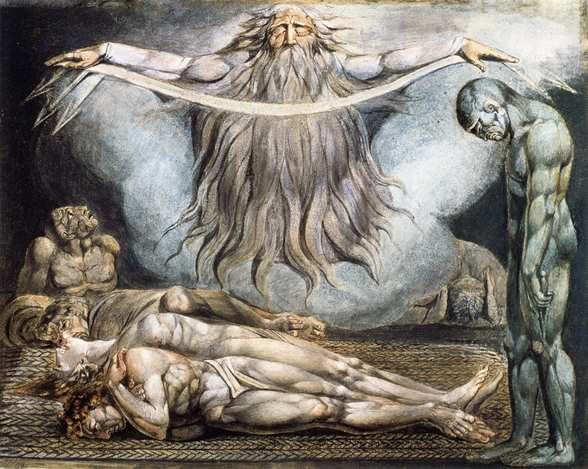
"The House of Death" is Blake's idea of what this earthly life is all about. A disembodied figure of Death and another representing Despair preside over a scene "Od ghastly Spasm, or racking torture, qualmes/Of heart-sick Agonie, all feavorous kinds..." So runs the passage in Paradise Lost probably used by Blake as text for this painting. He often painted from texts, as preachers preach from them.
Born in 1757, Blake spent most of his life in London, earning what little he could as a poet, painter and engraver.When he was sixty, a group of young painters adopted him and cared for him during his last years. During this period Blake produced a series of “Visionary Portraits” to show his friends the kinds of supernatural visitors he was receiving daily. Among them was the spectral flea whose likeness appears below. The flea told Blake that all fleas were inhabited by the souls of bloodthirsty humans. Blake died in 1827, singing on his deathbed of the heaven he saw before him. 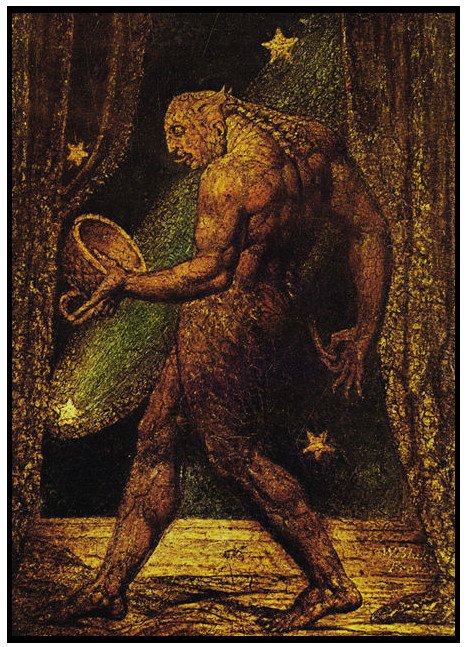
The trick for this kind of surreptitious baptism is to find a way while the soul is breathing as a form of pre-posthumous preparatory act, a screening… ”Mayfield explained various aspects of the Mormon religion involving posthumous baptism. He noted that, since the Mormons believe that life is eternal and that the departed reside in heaven, the baptism is not a forced baptism, but one that can be rejected by the individual. I subsequently sent a letter in June 1992, to Mayfield stating: “It shows an incredible insensitivity to the anguish of the brothers, sisters, children and even parents of these victims. Many of the relatives of Holocaust victims are still alive; many of them witnessed the murder of their loved ones. The Mormon Church’s reaction to this contemporary tragedy is to convert them to Mormonism?”
I questioned how an eight-year-old child gassed at Auschwitz could make an intelligent decision as to whether to accept the baptism. Mayfield explained that it is the Mormon belief that not only does a person’s spirit survive death, but the person grows in age and wisdom; therefore, an eight-year-old child who died in 1943 was 57 years old in 1992 and was capable of making a rational decision.”… ( Gary Mokotoff )…
“A great soul lapped in majestic and Unearthly Dreams”. Such was the painter John Martin, at least in the opinion of the novelist Sir Edward Bulwer-Lytton and most of his contemporaries. “Mad Martin” as he was called, for no better reason than for being the brother of a pyromaniac, was one of the most lauded painters of the early nineteenth century. Like Blake, he was no realist, preferring instead the landscapes of imagination. “Sadak in Search of the Waters of Oblivion” , a work of 1812, re-creates some immense and rocky isle of Martin’s own dreams.
In the foreground in “Sadak” who sets out to find the waters of forgetfulness. According to the legend, a jinni directs Sadak to his fearful destination at the edge of an abyss; just the spot for a good romantic shudder; then reappears, hurls him into the tides, and takes his leave. Martin thought the chief aim of the painter should be to astonish the viewer, by the sheer size of his canvas, if nothing else. He was a student of world history and believed in “catastrophism” , the theory that the earth had taken its present form through a series of cataclysms. To the delight of his public, he re-created a number of these events on canvas. Princess Charlotte of England and Louis Philippe of France were among his warmest admirers. Though Martin’s reputation was never dampened by the waters of oblivion in his lifetime, it has been unfortunately drowned by them since.
“I also found it very interesting that the members of Pink Floyd actually went to R.D. Laing himself to see if he could help Syd Barret. This leads to believe that the members were no doubt influenced by R.D Laing’s ideas. Laing was very critical of psychiatry. He did not believe that people suffering from mental illness were really suffering from any illness at all. Rather, he believed that the people who society is quick to call “insane” and throw into an institution, lobotomize, or give a pill too were really people who were suffering from some existential crises. Laing further asserted that it should be the ultimate goal of psychiatry to help a patient find the root of this crises…. It then says through “ill see you on the dark side of the moon” meaning they are weakly apologizing for the abandonment of the less fortunate and they will see them in the afterlife.
“The lunatic is on the grass” – this is obviously a reference to the notorious “Keep off the grass” signs. So the man who is considered insane is sitting on the forbidden turf, in his own happy world of “games and daisy chains and laughs”. Insanity is looked on as stepping off the boundaries of accepted society (“the path”).
Then we have the lunatic being mentioned again, but we discover he is only one of several “lunatics” being held down and repressed. Repressing insanity and trying to keep people in place becomes routine, as “every day the paper boy brings more”. Essentially doing the same unnatural thing to many naturally different individiuals. There is no nature in it.
“Goethe here wished to point out the danger to which a man exposes himself who would force an entrance into the super-sensible region before he has severed himself from his lower self. Only when love has permeated the whole man, only when the lower nature has been sacrificed, can the initiation into the higher truths and powers begin. This sacrifice is expressed by the serpent yielding of its own accord, and forming a bridge of its body across the river — that is to say, the astral plane — between the two kingdoms, of the senses and of the spirit. At first man must accept the higher truths in the form in which they have been given to him in the imagery of the various religions. This form is personified as the man with the lamp. This lamp has the peculiarity of only giving light where there is already light, meaning that the religious truths presuppose a receptive, believing disposition. Their light shines where the light of faith is present. This lamp, however, has yet another quality, “of turning all stones into gold, all wood into silver, dead animals into precious stones, and of destroying all metals,” meaning the power of faith which changes the inner nature of the individual. There are about twenty characters in this allegory, all symbolical of certain forces in man’s nature and, during the course of the action, the purifying of man is described, as he rises to the heights where, in his union with his higher self, he can be initiated into the secrets of existence. This state is symbolized by the Temple, formerly hidden in the abyss, being brought to the surface, and rising above the river — the astral plane. Every passage, every sentence in the allegory is significant. The more deeply one studies the tale, the more comprehensible and clear the whole becomes, and he who set forth the esoteric quintessence of this tale at the same time has given us the substance of the Anthroposophical outlook on life.” ( Rudolf Steiner )




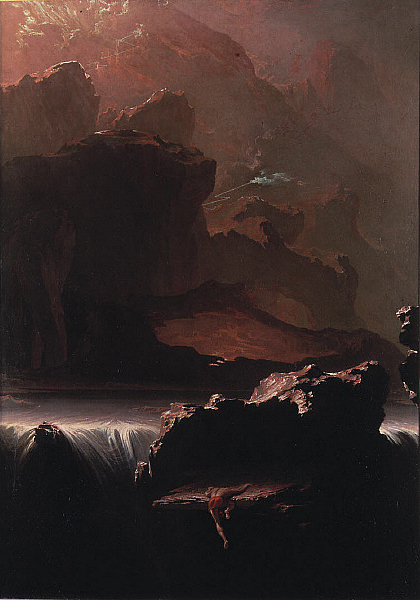
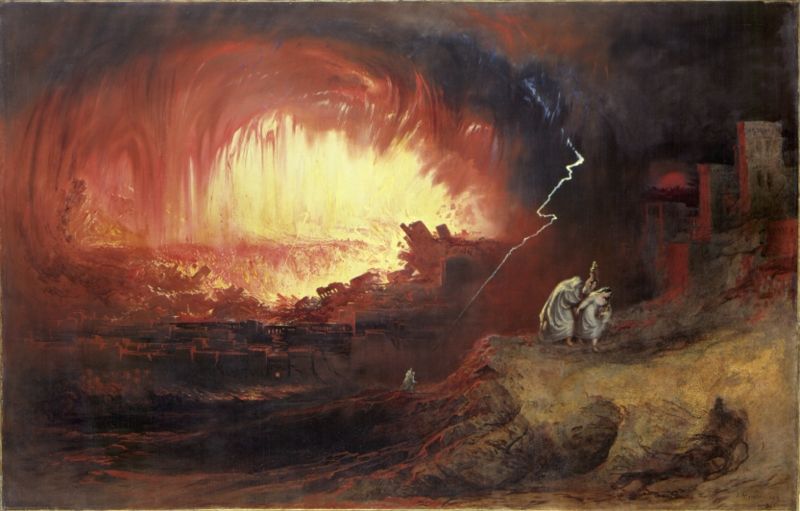




 COMMENTS
COMMENTS



